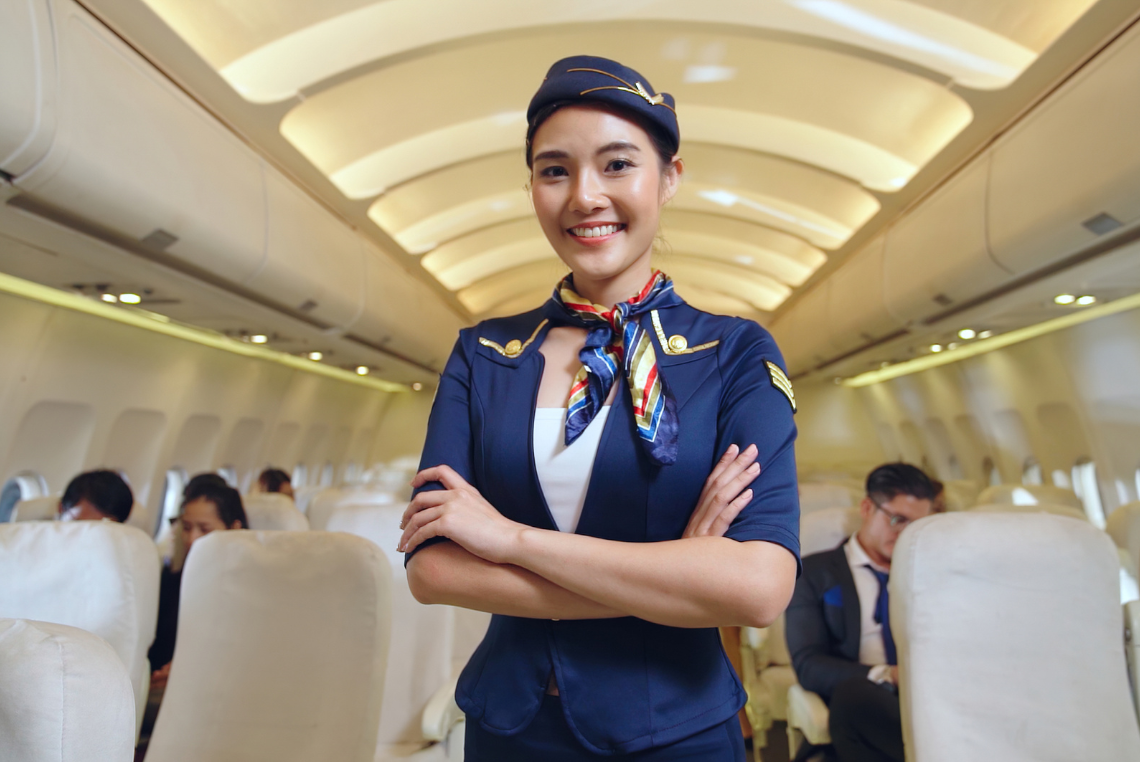- +91 22 23526372
- kgc@karangupta.com

Becoming an air hostess is a dream career for many, offering a chance to travel the world, meet diverse people, and enjoy a dynamic work environment. This comprehensive guide covers everything you need to know about becoming an air hostess, including types of air hostesses, benefits, the career path after the 12th grade, necessary courses, entrance exams, required skills, opportunities abroad, and salary prospects.
Air hostesses, also known as flight attendants, have various roles depending on the airline and the type of flights they operate. Here are the main types:
Domestic Air Hostesses: They work on flights within a single country. These roles are ideal for those who prefer shorter flights and staying within their home country.
International Air Hostesses: These air hostesses work on international flights, providing opportunities to travel worldwide. The job demands longer hours but offers exposure to different cultures and destinations.
Private Jet Air Hostesses: Employed by private jet companies or high-net-worth individuals, these air hostesses cater to a smaller number of elite passengers, often providing personalized and high-end service.
Corporate Air Hostesses: They work on corporate jets, providing services to business executives. This role often requires additional skills and experience due to the high level of service expected.
Being an air hostess comes with several attractive benefits:
Travel Opportunities: Air hostesses get to travel domestically and internationally, exploring new places and cultures.
Competitive Salary: The job offers a competitive salary along with other benefits like health insurance and retirement plans.
Flexible Work Schedule: Flight attendants often have flexible work schedules, with days off in between flights.
Networking: The role provides opportunities to meet and network with people from various walks of life, including celebrities and business leaders.
Discounted Travel: Many airlines offer discounted tickets for air hostesses and their families.
Becoming an air hostess involves a series of steps, from meeting educational requirements to passing physical and skill assessments. Here's a step-by-step guide:
Meet the Basic Eligibility Criteria:
Minimum educational qualification (typically 10+2).
Age between 18 to 26 years (varies by airline).
Height and weight proportional to ensure safety requirements.
Good vision (some airlines allow the use of contact lenses).
Pursue Relevant Education and Training:
After completing high school, consider pursuing a degree or diploma in aviation or hospitality.
Develop Essential Skills:
Communication skills, customer service, teamwork, and problem-solving.
Prepare and Pass Entrance Exams:
Many airlines require candidates to pass specific entrance exams and aptitude tests.
Attend Training Programs:
Airlines provide comprehensive training programs covering safety procedures, customer service, and emergency protocols.
Apply for Positions and Attend Interviews:
Prepare a professional resume and apply for positions. Attend interviews and demonstrate your skills and enthusiasm.
While you cannot directly become an air hostess after the 10th grade, you can start preparing by focusing on the following steps:
Complete Higher Secondary Education:
Enroll in a 10+2 program with a focus on subjects that will help in your career, such as English and any hospitality-related subjects.
Enhance Language and Communication Skills:
Join language courses and communication workshops to improve your proficiency in English and other languages.
Stay Physically Fit:
Maintain a healthy lifestyle to meet the physical requirements of the job.
Becoming an air hostess after the 12th grade involves focused preparation and education:
Undergraduate Preparation:
Enroll in a Relevant Degree or Diploma Program:
Consider programs like BBA in Aviation or Diploma in Aviation, Hospitality, and Travel Management.
Participate in Extracurricular Activities:
Join clubs and activities that enhance your communication and interpersonal skills.
Internships and Part-time Jobs:
Gain experience in customer service through internships or part-time jobs in the hospitality industry.
Postgraduate Preparation:
Advanced Degrees and Certifications:
Consider pursuing an MBA in Aviation Management or related fields for career advancement.
Attend Workshops and Training Programs:
Participate in additional training programs to specialize in certain aspects of flight service.
Choosing the right aviation course is crucial for aspiring air hostesses. Here’s a comparison of two popular courses:
|
Parameters |
BBA in Aviation |
BBA in Airport Management |
||||||||||||||||||||||||||||||
|
Duration |
3 years |
3 years |
||||||||||||||||||||||||||||||
|
Eligibility |
10+2 with a minimum of 50% |
10+2 with a minimum of 50% |
||||||||||||||||||||||||||||||
|
Course Focus |
Aviation industry, airline management, customer service |
Airport operations, safety management, logistics |
||||||||||||||||||||||||||||||
|
Core Subjects |
Aviation Management, Airfare Ticketing, Customer Service |
Airport Planning, Aviation Safety, Cargo Management |
||||||||||||||||||||||||||||||
|
Career Opportunities |
Air Hostess, Ground Staff, Aviation Manager |
Airport Manager, Ground Staff, Operations Manager |
||||||||||||||||||||||||||||||
|
Average Fee
Entrance ExamsTo secure admission into aviation courses or get hired by top airlines, you may need to clear certain entrance exams:
|
INR 3-5 lakhs |
INR 3-5 lakhs
|
